South Korea once again left the world with thrill and excitement with their new zombie apocalypse horror streaming TV series, All of Us Are Dead. K-pop music has been recognized by the whole world in the music industry, with BTS and Blackpink leading the market growth. If Hallyu brought you here, there’s a good chance that you are wondering how to speak Korean as well. Well, this post is perfect for you!
It’s not too surprising that many people worldwide are fond of and interested in Korean culture. When we say fondness, we’re not just talking about knowing the latest songs or K-dramas. It’s not just about eating Korean food or using Korean products. This also includes wanting to go deeper, like learning the Korean language and developing Korean skills. So, in this blog, let me walk you through the step-by-step procedures to speak Korean fluently.

Ways On How To Speak Korean
Have you experienced watching a K-drama without English subtitles or listening to music without translations? Imagine how great it would be to learn to speak Korean fluently and understand every Korean word.
The Korean Language (한국어, Hangugeo) is the official language of South Korea and North Korea. It is also spoken in other countries, but North and South Korea are the main countries. But since Hallyu (Korean wave) is widely spread worldwide, many people want to learn Korean. But, learning Korean is not an overnight process. It’s a long and serious learning process that requires your time and commitment. So, here are some steps in speaking Korean fluently.
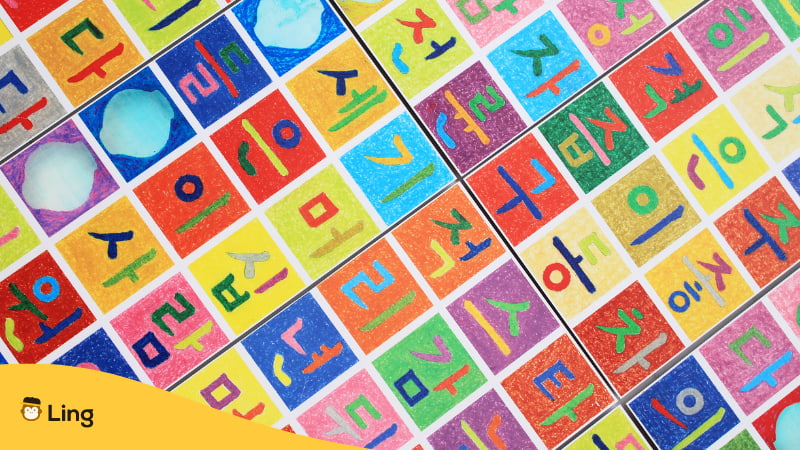
1. Learn Hangul (The Korean Alphabet)
Just like how we learned our native language when we were young, learning Korean starts with the alphabet. Learning the alphabet should be the first thing to learn how to speak Korean. In South Korea, the alphabet is called Hangul or Hangeul (한글). It is a writing system created by King Sejong the Great during the Joseon Dynasty in 1443. Interestingly, Koreans celebrate Hangul Proclamation Day (한글날 Hangeullal) to give honor and recognition to the creation of their alphabet and writing system.
Hangul has 24 that, consist of 10 vowels and 14 consonants, but, it also has 16 diphthongs and double consonants, making it 40 Korean letters. Korean has Chinese origin, so it also uses 3,000 Chinese characters called Hanja. Although it’s still used in South Korea in academic writing, religious texts, newspapers, dictionaries, classical literature, and headlines, Hanja is no longer widely used in North Korea. Here is the Korean alphabet:
Vowels
| Korean Alphabet | Pronunciation |
| ㅏ | ah |
| ㅓ | uh |
| ㅗ | oh |
| ㅜ | oo |
| ㅡ | uh |
| ㅣ | ee |
| ㅐ | ae |
| ㅔ | eh |
| ㅑ | yah |
| ㅕ | yuh |
| ㅛ | yoh |
| ㅠ | yoo |
| ㅒ | yae |
| ㅖ | yeh |
| ㅘ | wah |
| ㅙ | wae |
| ㅝ | wuh |
| ㅞ | weh |
| ㅚ | weh |
| ㅟ | wee |
| ㅢ | uey |
Consonants
| Korean Alphabet | Name in Hangul | Romanized Name |
| ㄱ | 기역 | giyeok |
| ㄲ | 쌍기역 | ssangiyeok |
| ㄴ | 니은 | nieun |
| ㄷ | 디귿 | digeut |
| ㄸ | 쌍디귿 | ssangdigeut |
| ㄹ | 리을 | rieul |
| ㅁ | 미음 | mieum |
| ㅂ | 비읍 | bieup |
| ㅃ | 쌍비읍 | ssangbieup |
| ㅅ | 시옷 | siot |
| ㅆ | 쌍시옷 | ssangsiot |
| ㅇ | 이응 | ieung |
| ㅈ | 지읒 | jieut |
| ㅉ | 쌍지읒 | ssangjieut |
| ㅊ | 치읓 | chieut |
| ㅋ | 키읔 | kieuk |
| ㅌ | 티읕 | tieut |
| ㅍ | 피읖 | pieup |
| ㅎ | 히읗 | hieut |
Hangul might seem hard to understand for English speakers because it’s different from the Roman alphabet, but the truth is it’s not. It’s easier than other East Asian languages like Mandarin Chinese and Japanese. You can learn the Korean alphabet in just 60-90 minutes.
The reason behind this is that Hangul is invented. It did not grow organically like other languages. Hangul is meant to be easily understood by language learners. It is created simple considering the language learners. If you know how to read Hangul, learning words will be easier.
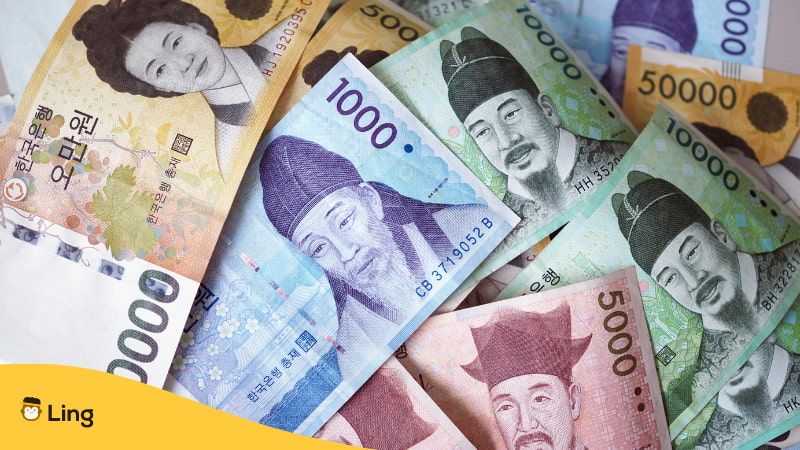
2. Learn To Count Using Korean Numbers
The next step on how to speak Korean is to learn Korean numbers. Learning how to count is an essential skill in learning Korean or any other language. “Hana (하나) Dul (둘), Set (셋 ).” This is how we hear Koreans count in K-dramas, but numbers and counting Korean are tricky.
To begin with, Korean uses two sets of number systems. First is the Sino-Korean, which originated from the Chinese. It is used for money, dates, phone numbers, addresses, and above 100. Here’s how to count in Korean from 1-10 using Sino-Korean numbers:
| English Translation | Hangul | Romanization |
| One | 일 | il |
| Two | 이 | ee |
| Three | 삼 | sam |
| Four | 사 | sa |
| Five | 오 | oh |
| Six | 육 | yug |
| Seven | 칠 | chil |
| Eight | 팔 | pal |
| Nine | 구 | gu |
| Ten | 십 | sib |
The second is the Native Korean Number System. It is used for the number of items between 1-99. Here’s how to count using the Native Korean Number System.
| English Translation | Hangul | Romanization |
| One | 하나 | hana |
| Two | 둘 | dul |
| Three | 셋 | set |
| Four | 넷 | ne(t) |
| Five | 다섯 | da-seo(t) |
| Six | 여섯 | yeo-seo(t) |
| Seven | 일곱 | il-gob |
| Eight | 여덟 | yeo-deolb |
| Nine | 아홉 | ahob |
| Ten | 열 | yeol |

3. Widen Your Korean Vocabulary
When you’re watching K-dramas or listening to Korean music, you might be unconsciously learning Korean words or Korean phrases. Little did you know that constantly hearing these words and phrases can help you use them in different ways, such as talking with your Korean friends? That’s why learning to widen your Korean vocabulary is really important. Here is some example of basic Korean vocabulary that you might be familiar of:
Why do these words seem easy to learn and remember compared to other Korean words? It’s because you have known these words from doing something close to your heart, like watching K-dramas, listening to K-pop, and more. Widening your vocabulary is another essential step in how to speak Korean. Learning Korean words is not just about randomly knowing words. You should start with the essential and basic Korean words that you can use in daily conversations. But, if you think about having zero Korean vocabulary knowledge, you’re wrong. The reason is that new Korean words are often based on English words.
One of the biggest mistakes of beginner students in language learning is learning random Korean words without knowing where to use them. Of course, it will somehow help you and widen your vocabulary, but learning and retention will be more effective when it’s meaningful.
Learning many new words can be confusing, and you might forget them right away if you don’t use or encounter them. This is where spaced repetition is really important for flashcards and language-learning apps. You may also want to check the blog 500 Basic Words And Phrases In Korean to widen your vocabulary.
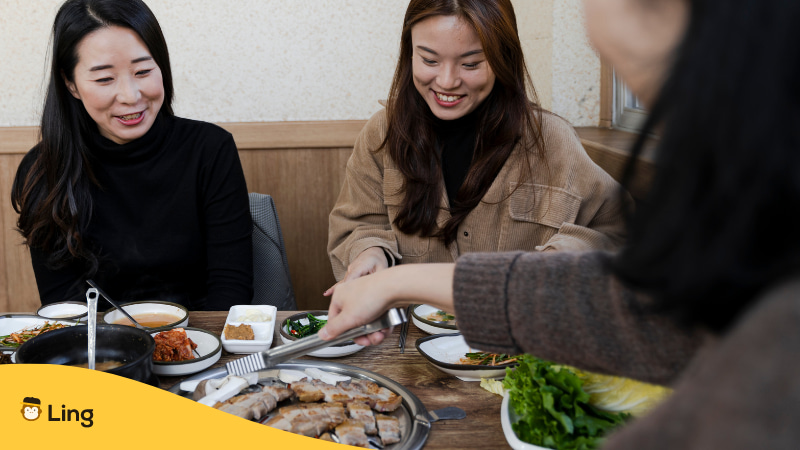
4. Learn Basic Conversational Phrases And Expressions
Another important step in speaking the Korean language is learning conversational phrases and expressions. Learning a new language can be too challenging. You don’t know where to start. With many words and phrases to remember, it’s important to learn some basic conversational Korean phrases and expressions. This will be helpful in case you plan on engaging in a conversation with Korean people. These basic conversational phrases or expressions can be basic greetings, airport vocabulary, ordering food vocabulary, and more.
Learning conversational phrases and expressions will help your life easier when you go to South Korea. You can use it in shopping, dining, asking for directions, or just short talks. It’s also helpful in breaking the ice during the first meeting and making meaningful connections with the native speakers. So, here are some examples of basic Korean conversational phrases and expressions:

5. Learn Korean Grammar
One of the most important ways how to speak Korean properly is to learn Korean grammar. Surprisingly, Korean grammar is really easy. You don’t have to be bothered with pronouns, for starters, because it’s rarely used. When it comes to conjugation in Korean, you can quickly get through it. The tense and amount of formality affect the meaning of Korean verbs. Even if they do vary, they do so in a predictable manner, depending on the verb’s last consonant (or vowel).
When the pronouns in the sentence change, the verbs remain the same. Because pronouns are rarely used in Korean, the verb is frequently utilized. Take a look at the example below that uses the verb “to eat” (먹다meogda).
- I eat – 먹어요
- you eat – 먹어요
- she eats – 먹어요
- he eats- 먹어요
- we eat – 먹어요
- they eat – 먹어요
It is essential to learn the grammar of a language. Not all languages follow the same grammar structure as English. In fact, Korean grammar is really different from English.
- English grammar uses Subject-Verb-Object word order, while Korean use Subject-Object-Verb.
- In Korean, when both speakers are familiar with the subject of a sentence, it is usual to omit it.
- Adjectives are similar to verbs in that they can be changed and rearranged to express a sentence’s tense.
- Koreans write general units first before the specific ones. Just take a look at how addresses are written in English. It starts with the specific house number and goes down to the city or country. In the Korean language, it’s the other way around.
- Koreans use honorifics. Because of this, there are modifications in grammar when talking to or about people with higher positions or older than us. Sentences are changed in a way that subjects, particles, verbs, and even objects are changed.
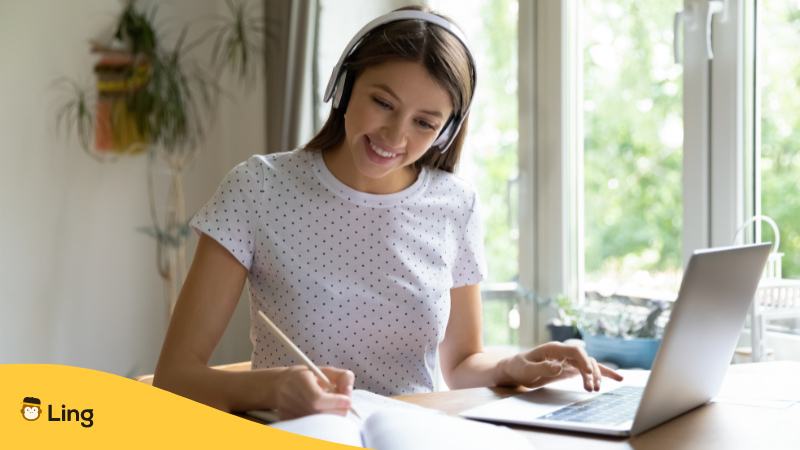
6. Study And Practice Korean Pronunciation
After learning the Korean alphabet, the next step in speaking Korean is to study the pronunciation. If you think that it’s going to be hard, then you’re wrong. Unlike other East Asian languages, such as Chinese, Korean doesn’t have tones. Learning the Korean language can be intimidating at first, but it’s much easier than in other languages. Korean pronunciation is a lot easier than Romanized English, so it’s better to focus on Korean pronunciation.
In Korean, a word or letter block has several meanings but do not worry because they are all pronounced the same. Because words have several meanings, you should learn how to use context so that you’ll know what the speaker is referring to.
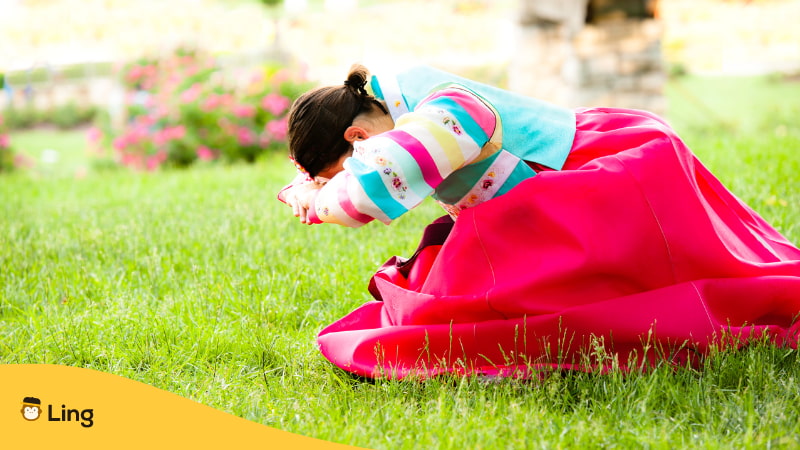
7. Understand Korean Forms Of Speech
You can’t learn to speak Korean without considering the Korean forms of speech. Respect and hierarchy are fundamental in Korean culture; they have different forms of speech. When talking to people, Koreans consider the hierarchy and the age of the people they are talking to because this will be their basis on what degree of formality to use. Here are the three degrees of formality in the Korean language:
Polite
The polite way is used when talking to people older than you, a stranger, or a colleague. This is the best degree of formality to use in formal social situations.
Informal
The informal way of speaking Korean is used when talking to your close friends or people of the same age or younger than you.
Formal/Honorific
The honorific or formal way is the very formal way of speaking Korean that is rarely used because it is used in formal settings.
Here are other Korean speech levels:
| Hangul (Korean) | Romanization | When To Use |
| 하소서체 | hasoseoche | This kind of speech was once used to address a royal family member. It’s a way of expressing your deepest gratitude to the individual you’re speaking to. |
| 합쇼체 | hapsyoche | It is a style of formal speaking that is exceedingly polite and respectful. Today, this type of speech is used to talk to elders, strangers, and the business or service industry. |
| 하오체 | haoche | It’s a formal speech style that’s been around for a long time and can be heard in traditional K-dramas. It’s used to address those of the same status or lower without sounding disrespectful. |
| 하게체 | hageche | This is another outdated Korean speech used by middle-aged people who want to talk to other people who are close to them but are socially lower than them. |
| 해라체 | haerache | It’s a formal way of speaking Korean that’s used with people of the same level or lower but with no extra respect. Even though there’s no added respect, it won’t still sound disrespectful as long as you have used it properly. |
| 해요체 | haeyoche | This is a courteous but casual speech. In most typical, everyday settings where civility is demanded, it’s the style of choice. |
| 해체 | haeche | There is no added level of respect or etiquette in this informal, casual form of speech. It’s what people use while speaking casually to one another, and it’s also what people refer to as “low form” in Korean. |

8. Engage In Conversations Using Korean Language
The ultimate goal of everyone who wants to learn Korean is to use it in actual conversations. This is where you’ll use and develop all the speaking skills you have learned. What’s the point of learning vocabulary, practicing pronunciation, and learning Korean speech levels if you won’t use it when talking to other people, especially to a native speaker?
Engaging in a Korean conversation has a lot of benefits. You can quickly get feedback on what you are doing wrong, and you can also learn the proper pronunciation of a word. This can be intimidating and challenging at first, but you’ll gain confidence when you get used to it. Where else can you practice speaking Korean aside from talking to a real native speaker?
Ways To Immerse Yourself In The Korean Language
Lisa of BLACKPINK is one of the leading K-pop idols in the K-pop industry. She was also named the most-followed K-pop idol on Instagram in 2021. With her single LALISA, which has surpassed 1.65 billion combined streams across Spotify and Youtube in just five months of release, it is no doubt that she is a legend in the K-pop industry. But, did you know that Lisa is not Korean and that she’s Thai? Lisa could not speak Korean when she came to Korea. So, how did she learn Korean? Of course, if you’re an avid fan, you already know it, but if not, Lisa can be your inspiration.
Lisa mentioned that her teacher didn’t want her to speak English in an interview. Instead, her teacher immersed her in the Korean language. She tried to keep her speaking Korean from beginning to end. It’s a long and tough journey for Lisa, but look at her now; she can understand, write, and speak Korean easily and fluently. This is powerful evidence that immersion in your target language is one of the best ways to learn. So, here are some ways to immerse yourself in the Korean language. These are also added ways how to speak Korean fluently.
Watch K-dramas, Korean Movies, And Korean TV Shows
All of Us Are Dead, Squid Game, and Our Beloved Summer is just a few of the latest K-dramas and series that people from around the world are binge-watching. While you’re having a fun time watching, why not use that as an advantage to learn Korean? With this, you can learn how Koreans use these words in different contexts and situations. You’ll also learn how Koreans speak from the traditional or historical era down to this modern age.
You can learn Korean K-drama vocabulary by just watching K-dramas, movies, and series. You can start with English subtitles and eventually remove them to see how well you improved. No need to look for motivation because watching itself is already addicting.
Listen To Korean Music
With K-pop songs topping the world music charts like BTS Butter, BLACKPINK’s DDU-DU DDU-DU, and TWICE’s What is Love? It’s no surprise that the K-pop fanbase continues to grow bigger. Because of this, there are lots of people who want to learn Korean. Imagine how great it is to sing and dance to your favorite K-pop songs without wondering what the lyrics mean. Listening to Korean music will also help you learn K-pop vocabulary and speak Korean.
Write Journals In Korean
Do you have some thoughts that you want to put into words? Do you want to write what happened to your day in the diary? Well, why don’t you write it in Korean? Writing journals will help you practice your skills in the Korean alphabet. If you master writing in Hangul, it will be easier to speak Korean. You can start with just one word in a sentence and work your way up until you can make a whole sentence or a paragraph.

Label Your Things Using Korean Words
Another way to immerse yourself is to label your things using the Korean alphabet. These are only small things to do, but they can have a huge effect, especially in widening your vocabulary. Since you’re labeling the things you usually see around you, it will be helpful in daily conversations.
Talk To A Native Korean Speaker
Do you have a Korean friend with whom you can talk in Korean? If you do, take that as an opportunity to engage in a conversation. The whole language learning process aims to help you speak Korean fluently, and you can’t do that without actually having a conversation. Having a language exchange partner is vital to developing your speaking skills. If you don’t have any Korean friends, you can search for or find a language exchange partner on social media but make sure it’s safe.
Enroll In A Language Course
Of course, enrolling in a language course is still one of the best ways to learn a language. Having a formal lesson will keep you guided and make your learning more serious. Although it will take a lot of time and money, it will be worth it if you’re serious about learning. If you don’t have enough time, you can enroll in different online language courses to learn online lessons and activities.
Hop In An Adventure In South Korea
Every Korean culture fan wants to step into the land of their favorite idols and celebrities, South Korea. There’s no better place to learn the Korean language than South Korea. Aside from immersing in the language, you will also experience the culture of the Korean people.
Use A Korean Learning App Like Ling
Since we are already talking about traveling and going overseas, let’s not forget to mention one of the greatest innovations in technology when it comes to language learning – language learning apps. Language learning apps can help you learn languages fun and engaging way. Since it can be downloaded on your phone or accessed through the web version, you can conveniently learn Korean and other languages.
You might have used at least one free app from the internet, but subscribing to a plan will open many other features that can improve your language skills. One of the must-try apps you can use to learn Korean is the Ling app. Developed by actual language experts, this app can help you learn Korean and other languages in record time. So, if you want to start speaking Korean, begin your first lesson with the Ling app now! Download it on the Play Store or App Store and try a few lessons to become familiar with the Korean language.














